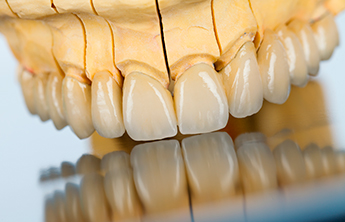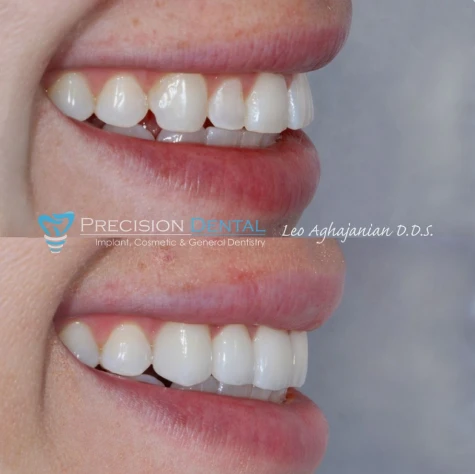Ceramic Crowns
Ceramic crowns are custom made tooth shaped caps that are used to repair a broken or decayed tooth in order to protect the tooth and restore form and function. Ceramic crowns differ from conventional crowns in that they have no metal inside. These crowns are made from a single piece of material (lithium disilicate-eMax or Zirconia) which gives them added strength and durability.
Schedule your appointment today with our dentist in Glendale, Dr Leo Aghajanian.

What are Crowns? Benefits, Candidate
Crowns have been a mainstay of dentistry for many decades. Originally, these restorative fixtures had been made of gold. This is still a commonly used dental material today, and there are inherent benefits to the malleability and durability of high quality dental gold. At the same time, we recognize the need for a fully natural aesthetic. While gold is more discreet than most people imagine, we believe that our patients deserve options. That is why we have chosen to offer all-ceramic dental crowns in our Glendale office.
An all-ceramic crown is crafted from a solid block of lithium disilicate. Ceramic crowns may be referred to as e-Max or Zirconia, both of which are recognized for their durability and authentic appearance. Without a metal substructure, like the standard porcelain-fused-to-metal crown, an e-Max or Zirconia crown will look much more like a natural tooth, translucent and shiny.
Ceramic crowns may be considered for their aesthetic value. However, for a restoration to truly be valuable, it must do its job and do it well. The high quality lithium disilicate that is used for our crowns is lightweight, yet resilient and capable of handling the load of chewing force.
Why Ceramic Crowns?
One of the primary reasons that patients choose ceramic crowns, aside from their completely natural appearance, is the biocompatibility of this metal-free option. In many cases, metal dental crowns at least somewhat agitate the surrounding gum tissue. What we want to see with crown treatment is a tight fit of gum tissue around the crown. This inhibits bacterial activity around the margins. If gingival tissue is irritated, it will not adhere as nicely around the edge of the crown. Ceramic restorations mitigate this risk.
Procedure for Dental Crowns
The process of treatment with a ceramic crown is similar to any standard crown. The tooth is prepared with the necessary reduction to remove unhealthy areas, such as those marked with decay. Then, an impression is taken of the tooth. This creates a model that can be used in the dental lab to fabricate the final crown. In the meantime, a temporary crown is worn over the tooth. Two visits are necessary to complete the entire restorative treatment.
Your oral health is the foundation for a beautiful smile. Your Glendale dentist has the treatment options you need, and delivers them with focused attention so you are pleased with your entire dental experience.
Related Articles About Crowns:

We are waiting for your next visit!
CALL US!
(818) 545-8923


